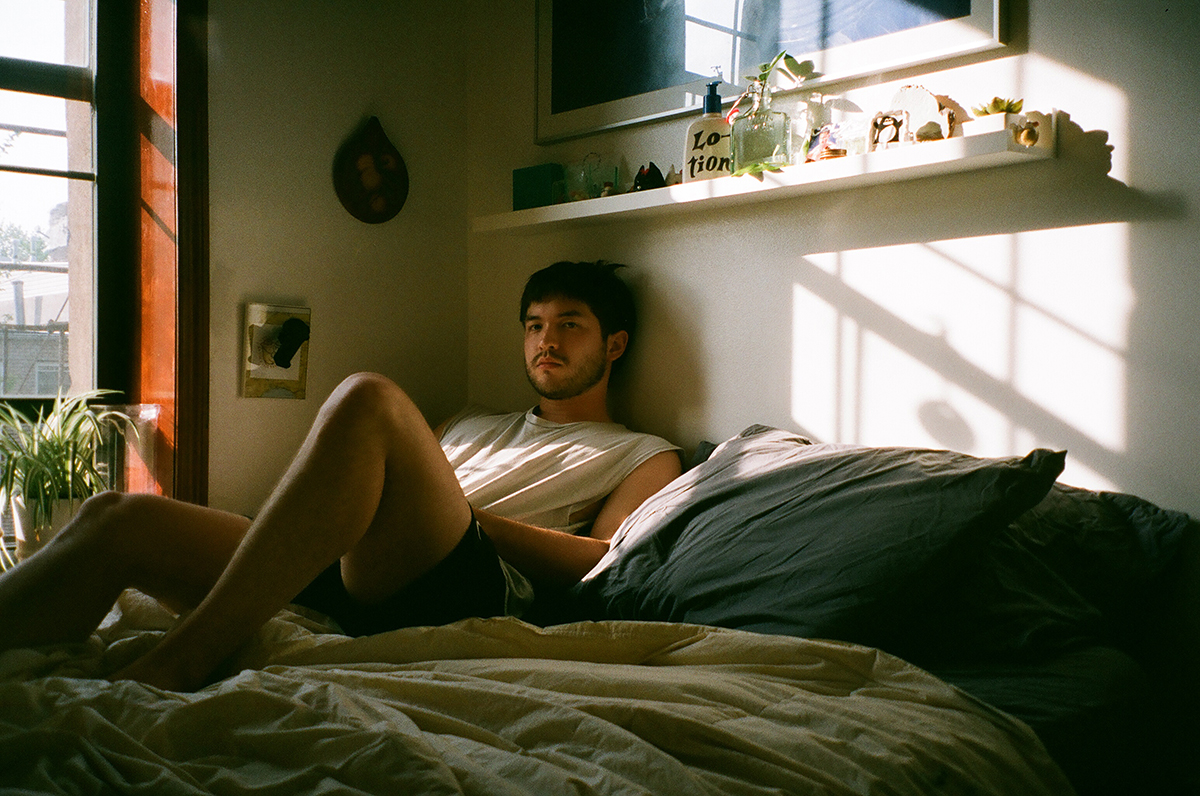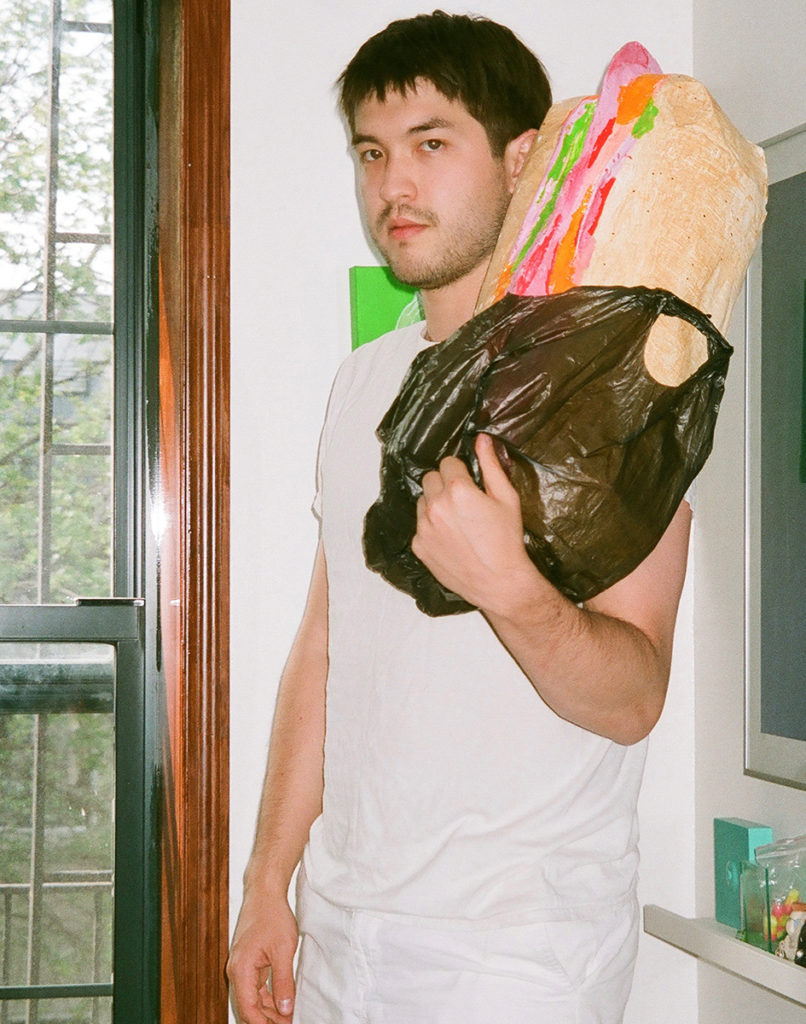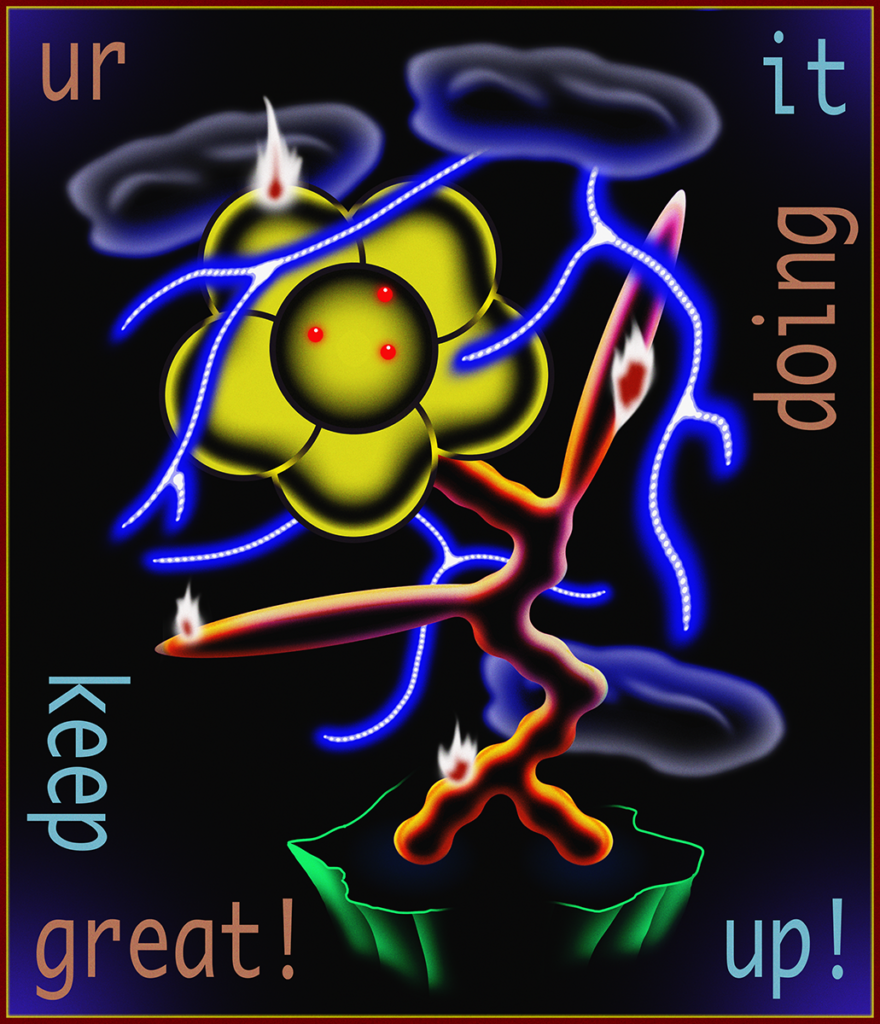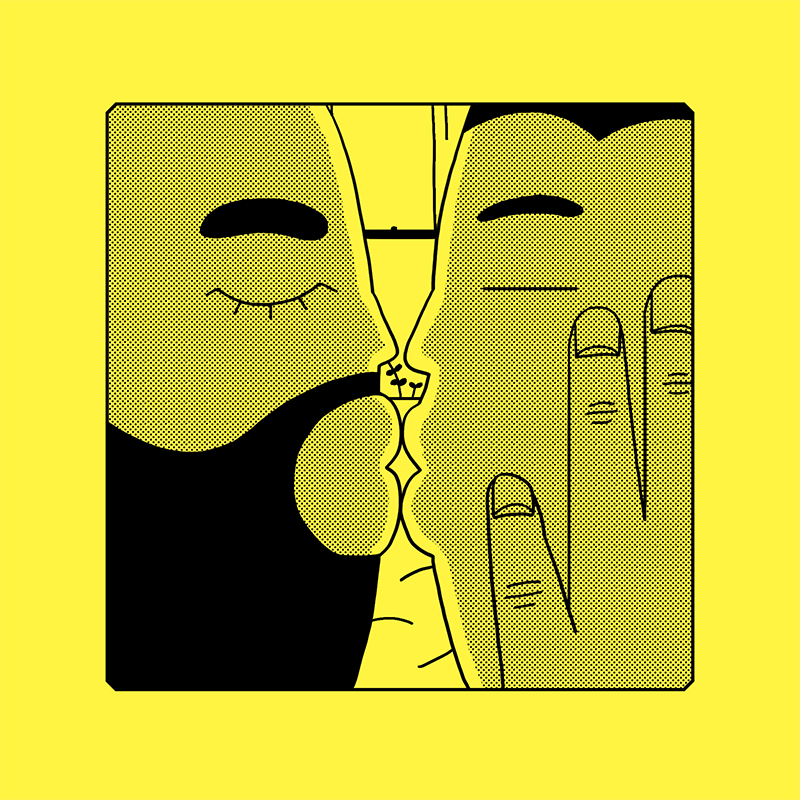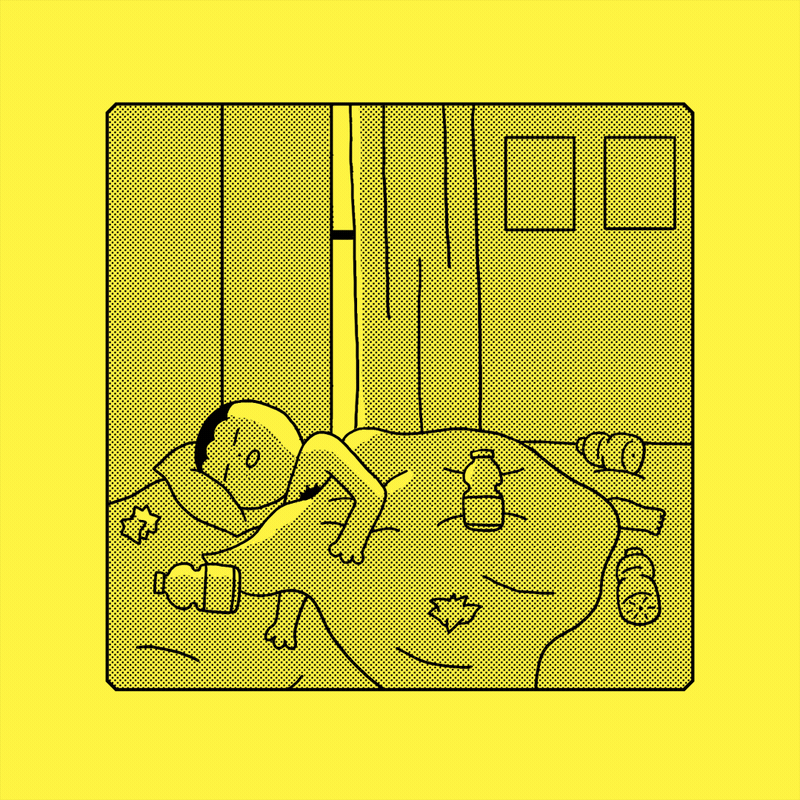The illustrator and designer lends his psychedelic gaze and kawaii aesthetics to Bubble_T’s roving party scene.
Text by Mitchell Kuga
Illustrations by Koji Yamamoto
In 2017, when Koji Yamamoto first went to Bubble_T, a party and art collective celebrating queer Asian identity, it felt like a revelation. Besides the predominately queer Asian crowd, “I was really drawn to the creative aspects of the people who were part of it,” says the 28-year-old illustrator and motion-graphic designer. Drag queens, artists, and designers populated the roving New York party. “That everyone would bring some element of themselves to the space felt cool and so fun.”
A few months later, at the urging of the party’s five founders, Koji contributed to that collective spirit by designing a digital flyer for a Bubble_T karaoke night at a gay bar in Brooklyn. It sparked an ongoing collaboration.
He made a Pride T-shirt for Bubble_T in collaboration with the iconic Pearl River Mart featuring anthropomorphic, dancing bubble-tea drinks. He created more party flyers, including a riff on a Hawaiian Sun can for a 2019 pool party at Surfjack Hotel in Waikīkī. And he dreamed up large-scale projections for parties at MoMA PS1, Asia Society, and Sony Music Hall, where the singer Robyn hosted an afterparty with Bubble_T and Papi Juice, a nightlife collective celebrating queer and trans people of color.
Most memorably, for Bubble_T’s Lunar New Year party in February 2020, Koji designed an animated projection that rotated and shimmered behind the stage at Elsewhere, a 24,000-square-foot nightclub in Brooklyn.
At first glance, the giant digital tableau resembled a spread you might see at a Chinese temple: a few vases, stray oranges and a banana, and calligraphy by artist Vincent Chong. But on closer inspection, it wasn’t your grandmother’s temple. A giant pineapple jiggled in the background. Metal rats skipped back and forth and popped playfully in and out of a melting vase. A disco ball twirled, the entire assemblage bathed in a deep red glow.
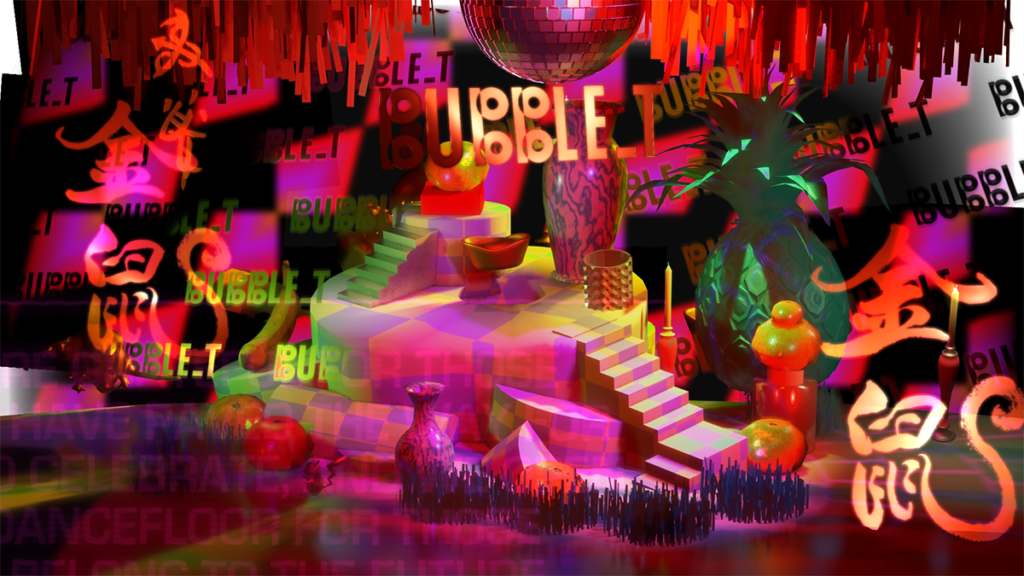
It was the visual focal point of the space, presiding over a sea of dancing bodies. As the night progressed, Koji snuck behind the control booth to tinker with the animation on his laptop, creating more and more distortions to mirror the heightened state of the crowd.
“I wanted it to look like the visuals got drunk,” he says. At one point, he added swaying, metallic text among the objects in the upper-right side. Written by the artist Mimi Zhu, it read as a kind of manifesto: “We are grateful for those who have paved the way for us to celebrate, and we open the dancefloor for those who belong to the future.”
Koji relishes the collaborative aspect of designing Bubble_T’s party projections. He aims for cohesion in scale and placement so no one element— Vincent’s calligraphy or Mimi’s text or the jiggly pineapple—steals the show.
“It’s nice to have the connection be through making stuff with other people,” he says. “And it’s nice when it feels cobbled together from a collective effort.” As he’s come to see it, Bubble_T is “all about healing from the violence of capitalism with collectivity and community.”
That piecemeal approach reflects Koji’s earliest memories of making art. As a kid growing up in Lawrence, New Jersey, he used stray pieces of wood he found in his father’s garage workshop as canvases for character-driven drawings, inspired by his grandmother’s tole paintings. His mother made greeting cards and sewed Halloween costumes for him and his two older siblings; in kindergarten, he went to school dressed as a painter with a beret and a palette constructed out of foamboard. “Basically, the artist emoji,” he says. He was obsessed with the manga series Doraemon and recalls begging his aunt to send him Doraemon magazines from Japan. He brought these range of influences, including the beloved films of Hayao Miyazaki, to the Rhode Island School of Design, which he graduated from with a degree in film, animation, and video (and a joint degree in computer engineering from Brown) before moving to New York City in 2015.
By day, Koji is a designer at the media company Vice, where his animations bend toward the hallucinogenic: a five-minute video enacting a woman’s acid trip in Cambodia, for instance, or a consciousness-expanding look inside the mind of rapper E-40.
Elsewhere, his illustrative work bears the imprint of his childhood manga obsession, featuring characters imbued with the affectation of a kawaii innocence “but maybe with something off about them,” he says. Kojimoji, an iMessage sticker set he produced with GIPHY Arts, features a naked, yellow, alien baby who cries, texts while sitting on the toilet, reads books, and thrashes behind a martini glass. His “bedroom series,” which he posts on Instagram as a kind of visual diary, depicts a cartoon version of himself in various states of ennui: lying in the fetal position surrounded by discarded tissues one day, a pair of underwear pressed to his face the next.
[Bubble_T is] all about healing from the violence of capitalism with collectivity and community.kOJI YAMAMOTO
But of all his work, making visuals for Bubble_T is “the most satisfying, because it’s for other people,” he says. “It has a kind of purpose.”
After VJing a New Year’s Eve party at Honey’s, a mead bar in Brooklyn, Koji flew to O‘ahu on January 1 2019, where members of Bubble_T and Papi Juice were throwing a joint party.
During his visit, he was struck by the number of locals of mixed Asian descent; the implicit understanding that islander identity was intersectional and complicated. Being from New Jersey, he was used to compartmentalizing being gay and Japanesen.
“I remember telling a boyfriend, who was white, that I identified more with being gay than Asian,” he says. Part of that has to do with the limitations of language. “I can explain with words my sexual identity.” As a hapa boy, it’s less clear is how to explain what it means for him to be Asian.
Fusing those identities is still a challenge, he admits, but he thinks he’s getting closer. “I think when I first encountered Bubble_T, I was like, wow, OK, here are a whole bunch of ways to be gay and Asian that felt closer to who I already was or where I thought I might be going as a young creative person in New York,” he says.
“I like that we can be Asian and queer together in a way that is unique to each of us.”

